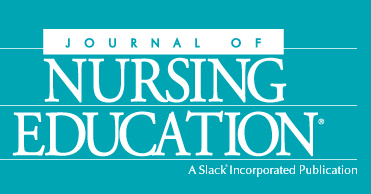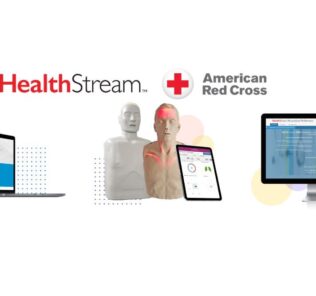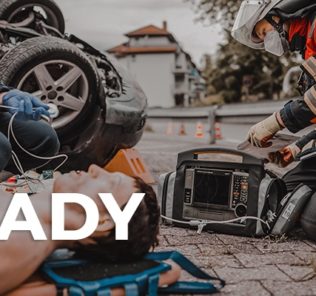Recent Simulation Articles from the Journal of Nursing Education

Today we are sharing a few of this year’s articles from the Journal of Nursing Education regarding simulation. Note, you will need to purchase these articles or have a subscription to access them fully.
Using Simulation Technology to Identify Gaps Between Education and Practice Among New Graduate Nurses by Ruth Everett-Thomas, PhD, RN; Beatriz Valdes, MSN, MBA; Guillermo R. Valdes, DNP, MSN-HCS, RN-BC; Ilya Shekhter, MBA; Maureen Fitzpatrick, MSN, ARNP-BC; Lisa F. Rosen, MA; Kristopher L. Arheart, EdD; David J. Birnbach, MD, MPH. Applied knowledge was observed among nurse groups from a medical–surgical residency program to measure clinical performance during simulation training. Twenty groups of new graduate nurses were observed during five simulated clinical scenarios, and their performances were scored on a 24-item checklist. Nurse groups showed significant improvement (p < 0.001) in applied knowledge in four clinical domains from week 1 to week 5, and the results provided valuable information of the groups’ overall performances. In two of the five scenarios, poor decisions and prioritization of competing tasks were factors associated with lower performance group scores. Complex patient conditions may pose a challenge for new graduate nurses, and standardized training during the residency program may help instructors recognize specific factors to address during the transition from education to practice.
Sponsored Content:
When Is It Okay to Cry? An End-of-Life Simulation Experience By Jennifer L. Bartlett, PhD, RN-BC, CNE; Jenny Thomas-Wright, MSN/Ed, RN; Holly Pugh, MSHA, RN-BC, CHSE :: This article details how a small college of nursing affiliated with a faith-based health care corporation integrated the education of end-of-life care into a megacode simulation. Students participated in a high-fidelity simulated megacode scenario in which the simulator died. Following de-briefing, student groups participated in an additional scenario in which faculty coached them through postmortem care and interaction with a family member and a hospital chaplain. As a result of this multidimensional, interprofessional simulation, students developed heightened skill in applying basic life-saving measures, increased knowledge of and comfort with postmortem care, and increased awareness of the emotions elicited by the experience. [J Nurs Educ. 2014;53(11):659–662.]
Life of a Caregiver Simulation: Teaching Students About Frail Older Adults and Their Family Caregivers By Merle E. Mast, PhD, RN; Erika Metzler Sawin, PhD, RN; Kathleen Anne Pantaleo, BA :: The number of older adults with caregiving needs is rapidly escalating, and the majority of these adults are cared for at home by unpaid family members. Nurse educators must better prepare nurse graduates to meet the needs of this population, as well as to include family caregivers as part of the health care team. This article describes the design, implementation, and preliminary outcomes of a unique learning experience, the Life of a Caregiver Simulation, which uses narrative pedagogy to increase students’ awareness and understanding of the needs of older adults, their family caregivers, and the community services they use. Subjective data from students (N = 25) indicated the simulation served as an effective catalyst for students to experience first-hand and understand the stress and burdens of caregiving.
Effect of Simulation on Knowledge of Advanced Cardiac Life Support, Knowledge Retention, and Confidence of Nursing Students in Jordan By Loai I. Tawalbeh, PhD; Ahmad Tubaishat, PhD :: This study examined the effect of simulation on nursing students’ knowledge of advanced cardiac life support (ACLS), knowledge retention, and confidence in applying ACLS skills. An experimental, randomized controlled (pretest–posttest) design was used. The experimental group (n = 40) attended an ACLS simulation scenario, a 4-hour PowerPoint presentation, and demonstration on a static manikin, whereas the control group (n = 42) attended the PowerPoint presentation and a demonstration only. A paired t test indicated that posttest mean knowledge of ACLS and confidence was higher in both groups. The experimental group showed higher knowledge of ACLS and higher confidence in applying ACLS, compared with the control group. Traditional training involving PowerPoint presentation and demonstration on a static manikin is an effective teaching strategy; however, simulation is significantly more effective than traditional training in helping to improve nursing students’ knowledge acquisition, knowledge retention, and confidence about ACLS. [J Nurs Educ. 2014;53(1):38–44.]
Learn more at the JNE Website!
Sponsored Content:
Lance Baily, BA, EMT-B, is the Founder & CEO of HealthySimulation.com, which he started while serving as the Director of the Nevada System of Higher Education’s Clinical Simulation Center of Las Vegas back in 2010. Lance is also the Founder and acting Advisor to the Board of SimGHOSTS.org, the world’s only non-profit organization dedicated to supporting professionals operating healthcare simulation technologies. His co-edited Book: “Comprehensive Healthcare Simulation: Operations, Technology, and Innovative Practice” is cited as a key source for professional certification in the industry. Lance’s background also includes serving as a Simulation Technology Specialist for the LA Community College District, EMS fire fighting, Hollywood movie production, rescue diving, and global travel. He and his wife Abigail Baily, PhD live in Las Vegas, Nevada with their two amazing daughters.
Sponsored Content:



















